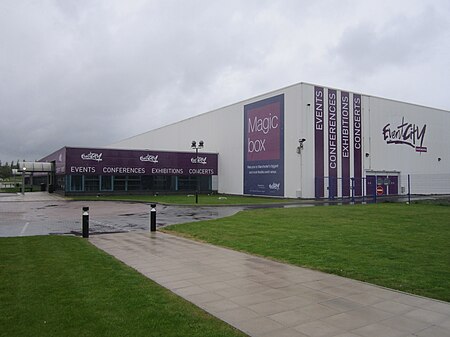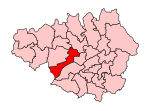EventCity
2011 establishments in EnglandBuildings and structures completed in 1995Buildings and structures demolished in 2023Buildings and structures in TraffordDemolished buildings and structures in Manchester ... and 4 more
Exhibition and conference centres in EnglandGreater Manchester building and structure stubsRedevelopment projects in the United KingdomThe Peel Group

EventCity Limited was a conference, gala dinner and exhibition venue in Greater Manchester, England, which was demolished in 2022-2023. It opened in 2011 and was the largest event venue in the North of England, with four halls and a combined space of 28,000 m2 (300,000 sq ft). It was closed during 2021 as a consequence of the COVID-19 pandemic. The plans for an alternative venue were also scrapped by the previous owners. EventCity was located in TraffordCity, an entertainment and leisure destination. Adjacent to the Trafford Centre, junctions 9 and 10 of the M60 motorway and the Barton Dock Road tram stop are close by.
Excerpt from the Wikipedia article EventCity (License: CC BY-SA 3.0, Authors, Images).EventCity
Barton Dock Road, Trafford Dumplington
Geographical coordinates (GPS) Address Nearby Places Show on map
Geographical coordinates (GPS)
| Latitude | Longitude |
|---|---|
| N 53.46551 ° | E -2.33895 ° |
Address
Barton Dock Road
Barton Dock Road
M41 7PA Trafford, Dumplington
England, United Kingdom
Open on Google Maps







